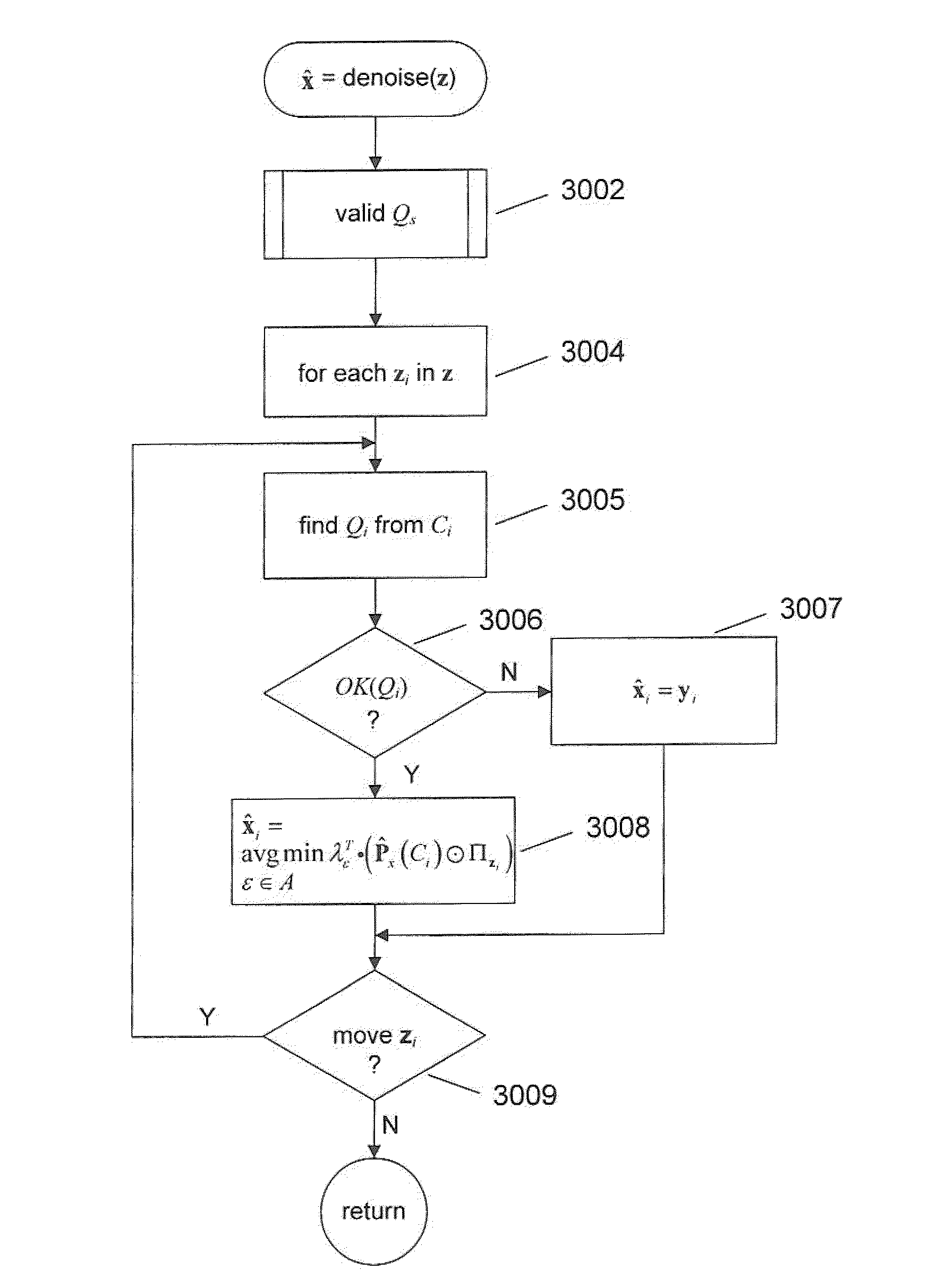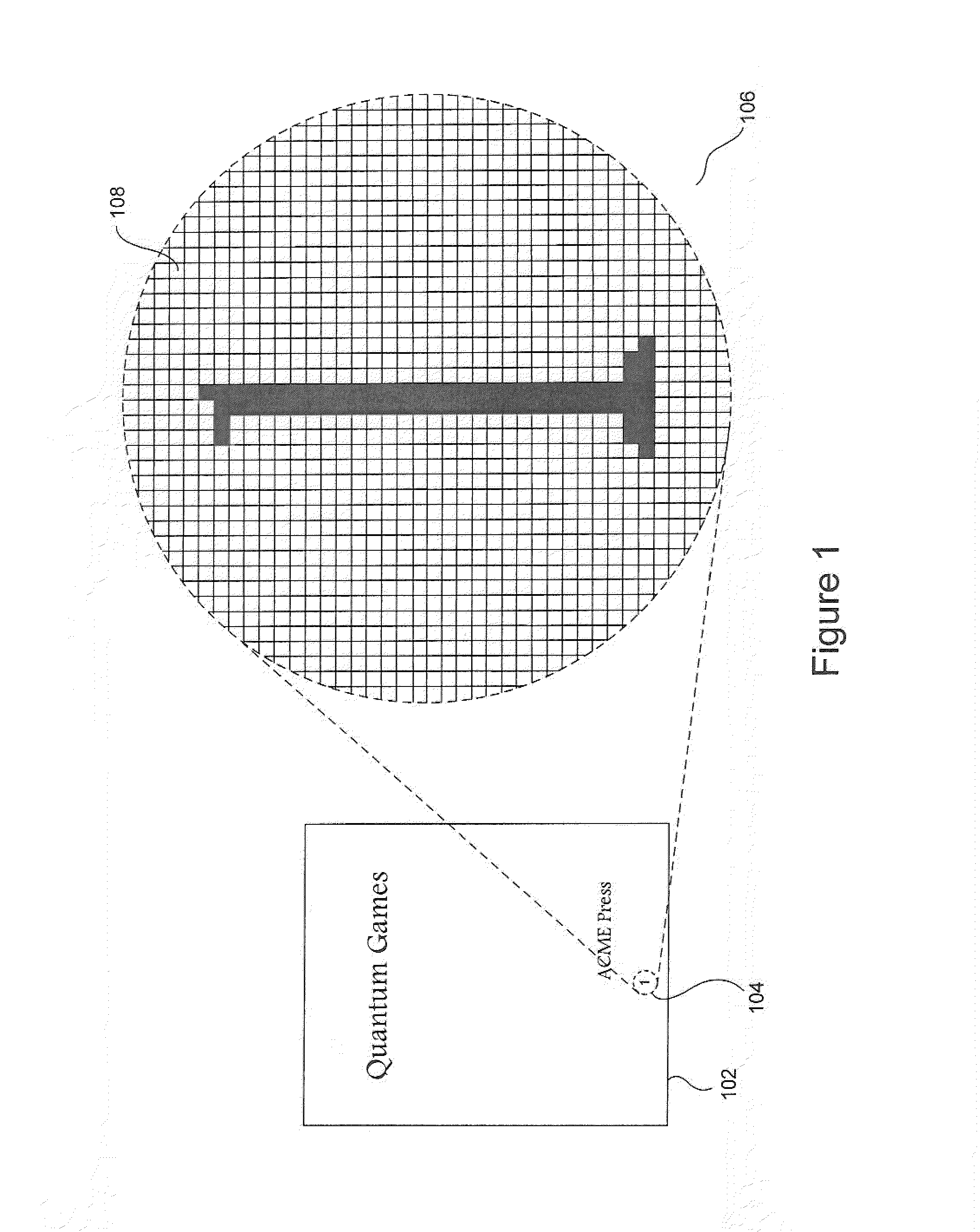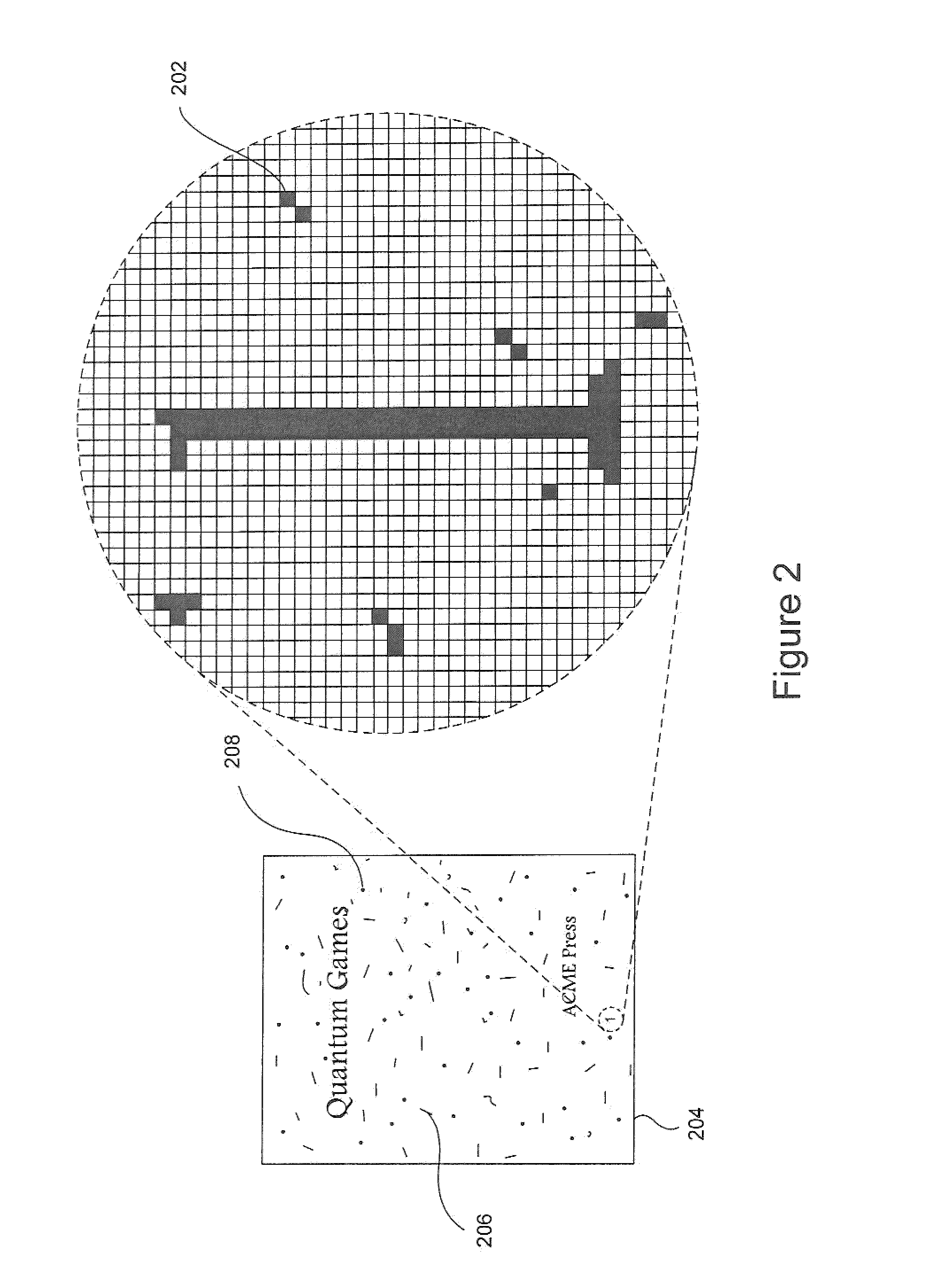Context-cluster-level control of filtering iterations in an iterative discrete universal denoiser
a discrete universal denoiser and context cluster technology, applied in the field of noise and data detection, can solve the problems of affecting the quality of the data, the amount of redundant data needed, and the amount of redundant data needed, and the accompanying costs and inefficiencies associated with redundant data, and the original is distorted
- Summary
- Abstract
- Description
- Claims
- Application Information
AI Technical Summary
Benefits of technology
Problems solved by technology
Method used
Image
Examples
Embodiment Construction
[0035]Embodiments of the present invention are directed to various enhanced discrete-universal denoisers that have been developed to denoise images and other one-dimensional, two-dimensional or higher-dimensional data sets in which the frequency of occurrence of individual contexts may be too low to gather efficient statistical data or context-based symbol prediction. In these denoisers, image quality, signal-to-noise ratios, or other measures of the effectiveness of denoising that would be expected to increase monotonically over a series of iterations may decrease, due to assumptions underlying the discrete-universal-denoising method losing validity. Embodiments of the present invention apply context-class-based statistics and statistical analysis to determine, on a per-context-class basis, when to at least temporarily terminate filtering iterations on each conditioning class. Each iteration of the iterative methods applies context-based denoising only for those conditioning classe...
PUM
 Login to View More
Login to View More Abstract
Description
Claims
Application Information
 Login to View More
Login to View More - R&D
- Intellectual Property
- Life Sciences
- Materials
- Tech Scout
- Unparalleled Data Quality
- Higher Quality Content
- 60% Fewer Hallucinations
Browse by: Latest US Patents, China's latest patents, Technical Efficacy Thesaurus, Application Domain, Technology Topic, Popular Technical Reports.
© 2025 PatSnap. All rights reserved.Legal|Privacy policy|Modern Slavery Act Transparency Statement|Sitemap|About US| Contact US: help@patsnap.com



